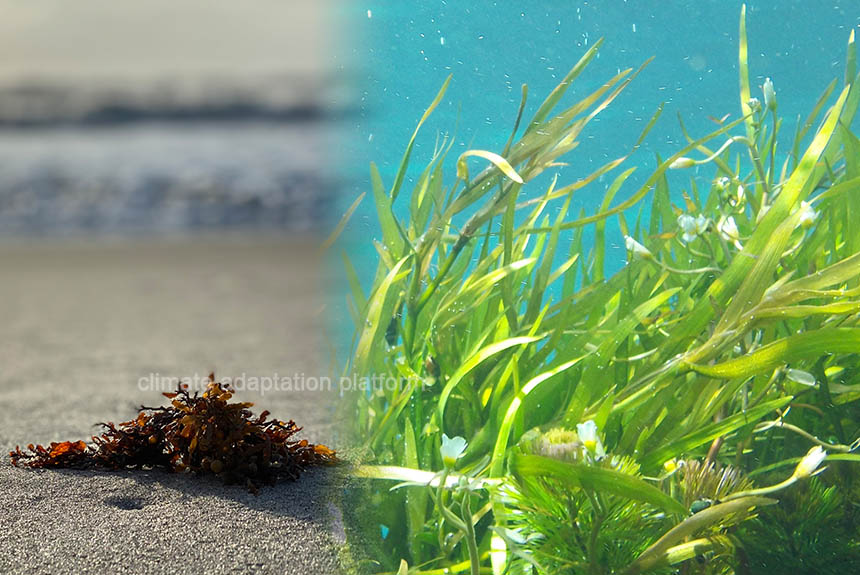Warming ocean temperatures are impacting seaweed growers in the Philippines.
The USAID report, “Philippines Climate Vulnerability Profile,” reveals that the air and sea surface temperatures surrounding the archipelago have risen by about 1°C since 1970 and are projected to increase by 1.4 by 2050.
This seemingly tiny increase in sea surface temperatures has harmed seaweed farmers in Cebu, who rely on the industry for their livelihoods. Seaweed harvest had sharply declined due to the rising temperatures.
Timothy James Cipriano, senior lecturer at the Department of Geography of UP Diliman and assistant professor of geography at the Philippine Normal University (PNU), says the record-high ocean surface temperature could cause a string of events that would impact both humans and the country’s marine ecosystem (Baclig, 2023).
“In the Philippine context, rising ocean temperatures would increase the possibility of loss of breeding grounds for marine life—along with human activities such as reclamation,” said Cipriano, a geographer and professor whose research focuses on hazards and disasters.
He added that this implies our food security since we get our food source from our marine ecosystem, such as fish and shrimp,” he said.
Warm ocean temperature also fuels tropical typhoons, making them stronger and more disastrous. Typhoons in the Philippines are becoming more frequent and intense and could devastate seaweed farms and operations in the country.
Cebu, Philippines seaweed farmers have received assistance from Climate Foundation, an independent nonprofit focused on food security and climate change mitigation, to apply deep-sea marine permaculture to reinvigorate seaweed farming in the Philippines. The organisation hopes that the success of this project in Cebu, Philippines, can also be replicated in other areas worldwide.
The commercial seaweed industry in the Philippines supports an estimated 200,000 families, but climate change’s effect of warming sea surface temperature puts this livelihood at risk for many families.
In Compostella, a coastal town north of Cebu City, a small team of engineers, biologists, scientists and local fishermen is piloting an innovative way to grow seaweed using a 1,000-square-metre submersible ring connected to a winch.
In the evening, the seaweed growing on these rings is lowered 120 metres below the sea surface to feed from the cold and nutrient-rich waters. It is lifted to the surface in the morning to receive the needed sunlight to photosynthesise and grow.
From the pilot project of 1,000 square metres, researchers plan to increase this size by a factor of 10 into a hectare-sized submersible seaweed forest to become more commercially viable for seaweed farmers and communities. The technology will allow farmers to grow seaweed all year round.
“All the parameters are new. But the quality should be good, and the growth rate should be much faster than even traditional seaweed farming,” said Climate Foundation’s marine biologist Eric Smith (Board, 2023).
Board (2023) says, “And the big advantage is just the stability; they’d be able to grow 12 months out of the year instead of relying on dwindling good growth seasons.”
The project also aims to close the gap between their research findings and what the farmers need, and they are achieving that. Dr Jayvee Saco from the VIP Center for Oceanographic Research and Aquatic Life Sciences at Batangas State University says that farmers are very receptive to the technology presented to them because they know it will improve their livelihoods. Saco says that the application for seaweed and its by-products is vast, and markets are waiting to be tapped whenever farmers are ready to meet the demands.
Carrageenan, an extract of red seaweed, is an example of a ubiquitous food additive in people’s daily lives worldwide.
“It’s found in ice cream, bread, cakes, sausages, beer, milk, napkins, diapers, gel pens, makeup. It’s everywhere. So, there’s a lot of potential in the usage of seaweed. It’s a matter of how we can utilise them,” Dr Saco said (Board, 2023).
Watch the video below for the seaweed farming innovation that the Climate Foundation introduced to Cebu Seaweed farmers and how this technology not only increases their seaweed harvest but can also benefit rice farmers and fish farmers in the country:
Learn more about the innovative seaweed farming technology introduced in Cebu, Philippines, by clicking the link in the “Source” section below.
Source:
Baclig, C. (2023, April 21). Ocean warming impact on Philippines: To know the future, look at the past. Asia News Network. Retrieved from https://asianews.network/ocean-warming-impact-on-philippines-to-know-the-future-look-at-the-past/
Board, J. (2023, October 8). Deep-sea solution seeding hope for struggling but essential seaweed farming industry. Retrieved from https://www.channelnewsasia.com/sustainability/philippines-seaweed-farming-food-security-climate-change-3824146



Leave a Reply